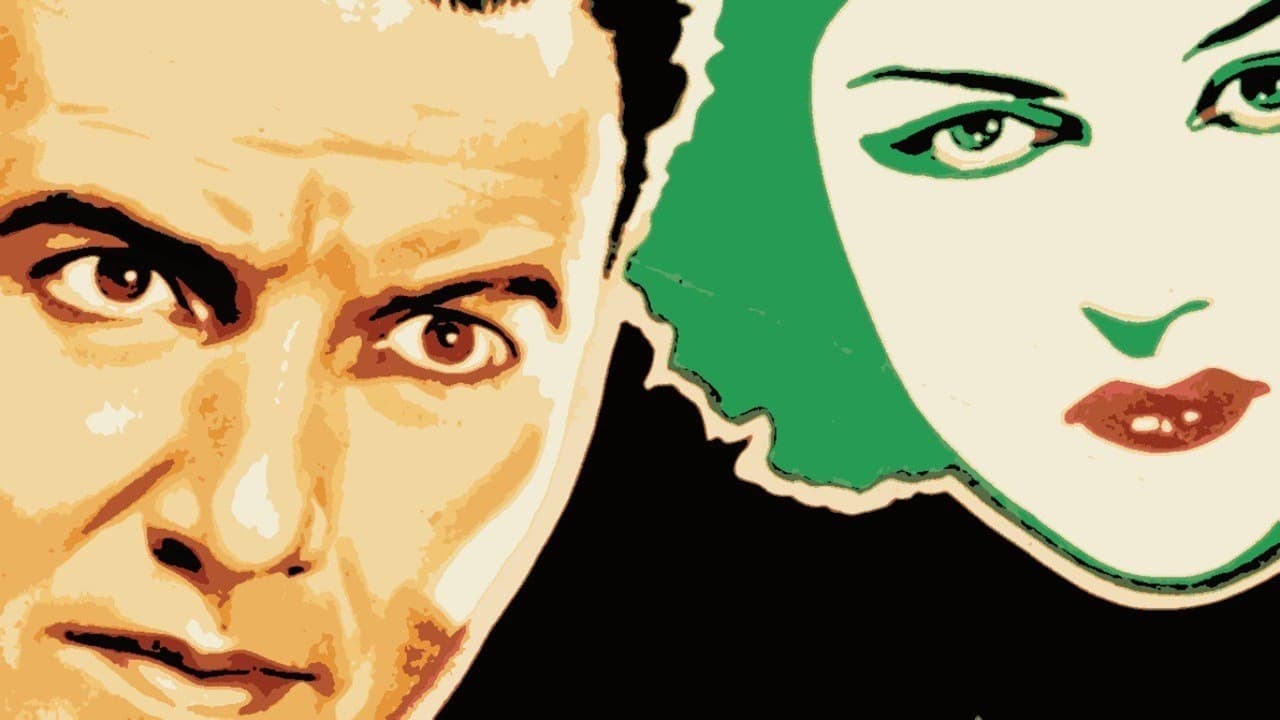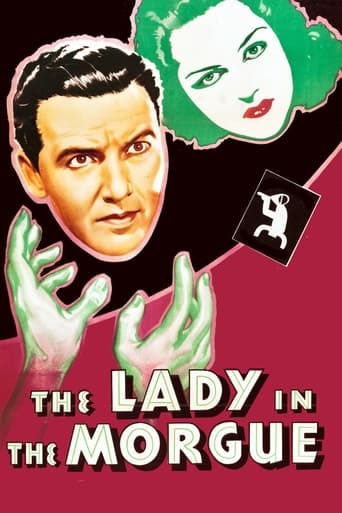Matialth
Good concept, poorly executed.
BroadcastChic
Excellent, a Must See
Beystiman
It's fun, it's light, [but] it has a hard time when its tries to get heavy.
Plustown
A lot of perfectly good film show their cards early, establish a unique premise and let the audience explore a topic at a leisurely pace, without much in terms of surprise. this film is not one of those films.
gridoon2018
Grade-D mystery programmer in underdressed sets. The director, Otis Garrett, tries to keep it running with some fast screen wipes, but it still feels much longer than its 68 minutes. Preston Foster tries to carry it almost single-handedly; it's hard to tell most of the supporting characters apart, because they look the same, they dress the same and they talk the same. *1/2 out of 4.
mark.waltz
This messy crime club murder mystery suffers from tiresome clichés and stereotypical characters that just aren't interesting enough, even for a film running 72 minutes. This bottom of the barrel B film focuses on the whereabouts of a corpse, allegedly a hotel suicide. With detective Preston Foster trying to discover the truth of what happened, it becomes obvious pretty fast that the underworld has an interest in the whereabouts of the corpse as well, one obviously non-grieving mobster claiming that the corpse was his wife. This overly familiar plot, done so much better, succeeds in getting more convoluted as it goes along. The featured cast is second rate at best. A weak entry in the many series Hollywood studios put out weekly to bring in dime store novel fans. In this case, the film-goer deserved change on that dime.
JohnHowardReid
Producer: Irving Starr. A "Crime Club" selection. Copyright 21 April 1938 by Universal Pictures Co., Inc. New York opening at the Globe: 8 May 1938. U.S. release: 22 April 1938. Australian release: 25 August 1938. 8 reels. 70 minutes.U.K. release title: Case of the Missing Blonde. Alternative title: Corpse in the Morgue.SYNOPSIS: A body is stolen from the city morgue. Why?NOTES: Second of the three "Bill Crane" series, all starring Preston Foster and Frank Jenks, and all based on Jonathan Latimer novels. The others: The Westland Case (1937), The Last Warning (1938).COMMENT: Jonathan Latimer's famous novel doesn't translate too successfully to the screen, despite the best efforts of all concerned. The trouble is that the plot is just too complicated. It's impossible to follow on a first or even a second viewing. Third time around, — following directly on the previous viewings and being armed with the solution, — I just managed to piece it together. Nonetheless, despite not knowing what's going on for most of the time, The Lady in the Morgue is a fascinating film. The setting is sufficiently bizarre, the action sufficiently fast-paced, the direction sufficiently stylish and the acting sufficiently charismatic to carry the audience along.One disappointment, however, is that the lovely Patricia Ellis has so little to do. She actually figures in only four scenes: the introduction in her apartment; a night-club (in which she wears an absolutely stunning gown) followed by a sequence at home; and the courtroom climax. Brash Preston Foster, on the other hand, is rarely absent. Jenks is okay as his sidekick, whilst it's great to see Barbara Pepper as a jaded beauty.Several set-pieces — notably a scene in the murdered girl's apartment, a coroner's inquest, a graveyard resurrection and a murder attempt at the morgue — keep the thrills coming at a pace that fortunately defies the lack of logic in the plot. Cortez's stylishly moody photography is a major asset.
goblinhairedguy
Part of the Crime Club series, and based on an original by Jonathan Latimer, this nifty little mystery is often cited as a model of 30s B-movie adeptness. It was directed by the unjustly forgotten Otis Garrett (who died young), a former editor who uses flash-pan edits and other visual tricks to maintain a breakneck pace -- so fast that it's pretty difficult to follow the complex plot. Although a bit too reliant on dialog scenes, there are enough effective wisecracks, bizarre demimonde characters (shifty undertakers, dour taxi drivers, carefree taxi dancers) and risqué asides (apparently, the production code enforcers often neglected these low budgeters) to raise the quality well above the norm. One side benefit is an appearance by a young Barbara Pepper, sassy and sardonic as ever, but surprisingly lithe and seductive. Soon-to-be-famous Stanley Cortez provided the cinematography.

